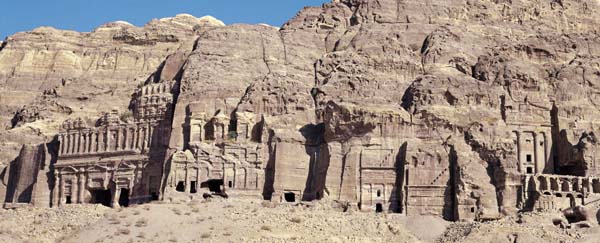Image Details

Photo by Jane Taylor/Sonia Halliday Photographs
Just north of the amphitheater, at the foot of Jebel Khubtha, stand four of Petra’s largest rock-carved tombs. Known as the Royal Tombs, they are often described as the burial place of the Nabataean kings, but no one really knows what these grand monuments enshrined. At far right is the first-century A.D. Urn Tomb, a tall, colonnaded building with two rows of vaulted terraces at the base of its facade. The Urn Tomb was converted into a church in the mid-fifth century A.D., and it still bears an inscription to “Christ the Savior” on one of its inner walls. To the north (left) of the Urn Tomb, is the plainer Silk Tomb, named for the multi-hued striations running across its facade. Next in line is the first-century A.D. Corinthian Tomb, known for its floral columns and capitals. Finally, at far left, is the 150-foot-high, 150-foot-wide Palace Tomb. This immense first-century A.D. monument was partially built with free-standing stones; much of its original superstructure has collapsed over time.
